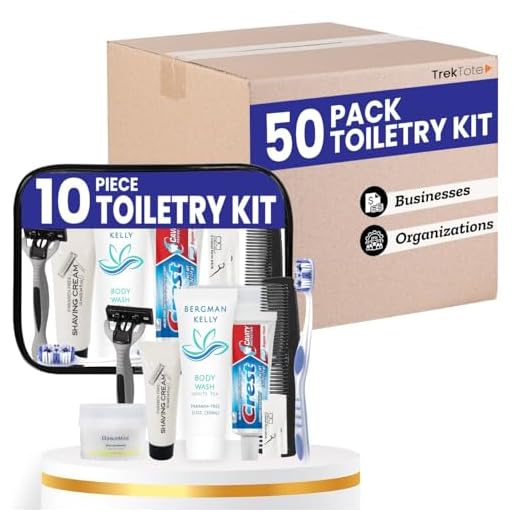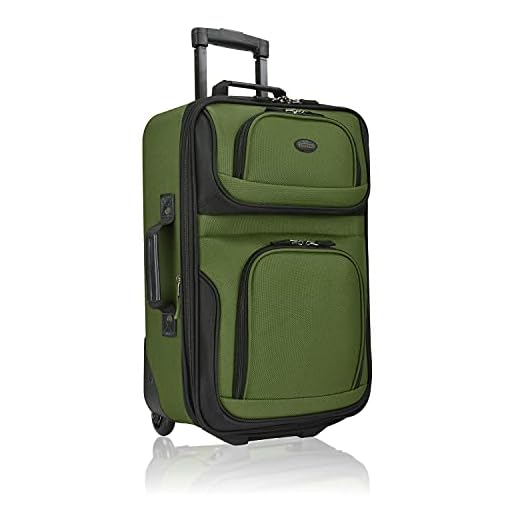



Prioritize compactness and organization. Choose a versatile bag that fits airline requirements and ensures easy access to essentials. A backpack or a small rolling suitcase works well.
Clothing should be lightweight and wrinkle-resistant. Opt for a mix of mix-and-match pieces: two tops, one pair of bottoms, and a lightweight jacket. Roll your garments to save space and minimize creasing.
Limit personal care items to travel-sized containers. Consider solid alternatives for liquids. Essential toiletries can often fit into a single zippered pouch, keeping things neat and accessible.
Don’t forget important documents and electronics. Keep your passport, identification, and tickets in a designated pocket. A compact tech organizer can store chargers, headphones, and other gadgets without clutter.
Lastly, plan for any activities. Include a small, foldable bag for potential souvenirs or a water bottle to stay hydrated. Always leave a bit of room for unexpected finds!
Efficient Packing Strategy for Short Trips
Prioritize versatile clothing items. Choose pieces that can be mixed and matched to create different outfits while minimizing the total number of garments. Opt for lightweight fabrics that resist wrinkling.
Utilize packing cubes for organization. These compartments not only save space but also make retrieval simple during your travels. Assign specific cubes for clothing, toiletries, and electronics.
Limit shoes to two pairs: one casual and one formal or functional. Wear the bulkier pair during transit to save space.
Toiletries should be downsized. Invest in travel-sized containers or use refillable ones for your essentials. Consider solid alternatives for shampoo and conditioner to comply with carry-on regulations.
Maximize the use of your bag’s pockets. Store documents, electronics, snacks, and smaller items in easily accessible sections for quick retrieval.
Layer your clothing when traveling. Use bulky items as outer layers to free up space in your bag for other essentials.
Prepare a checklist before you begin. This will help to ensure that nothing is forgotten and that you stick to your packing limit.
Lastly, remember to check airline regulations regarding dimensions and weight to avoid last-minute issues at the airport.
Choosing the Right Bag for Short Trips
Select a carry-on with sufficient size, typically ranging from 20 to 22 inches in height. This dimension ensures that your bag fits comfortably in overhead compartments or under seats. Opt for lightweight materials, such as nylon or polyester, to stay within weight limits while maximizing storage space.
Types of Bags
A duffel bag is a versatile choice, offering a large main compartment ideal for clothes and essentials. Look for one with multiple pockets to keep smaller items organized. A backpack provides hands-free convenience and is especially practical for city explorations or varied terrains. Select a model with padded straps for comfort during longer commutes.
Additional Features
Consider a bag with wheels for ease of transportation, particularly if navigating airports. A detachable shoulder strap also enhances versatility, allowing you the option of carrying it as a crossbody. Ensure you choose a design with a secure closure, such as zippers, to protect your belongings during transit.
Clothing Necessities to Include
Prioritize versatile garments that can be mixed and matched. A classic pair of dark jeans or trousers is a great foundation, as they can transition from day to night effortlessly.
Layering Pieces
Add a lightweight sweater or cardigan to your selection. This layer provides warmth without taking up much space and can be easily removed when temperatures rise.
Footwear Choices
Opt for comfortable shoes suitable for various activities. A pair of chic sneakers is ideal for walking, while a compact pair of flats or loafers can enhance your outfit for evening outings.
Include a couple of tops–consider a basic t-shirt and a dressier option. These will offer flexibility depending on your plans. Lastly, don’t forget appropriate undergarments and a pair of pajamas.
Packing a light rain jacket or windbreaker is also advisable, ensuring preparedness for sudden weather changes without occupying significant space.
Smart Toiletries Packing Tips
Utilize travel-sized containers to minimize volume. Many brands offer refillable bottles specifically designed for transportation. Fill them with your favorite shampoos, conditioners, and lotions. It not only saves space but also adheres to liquid restrictions.
Organizing Toiletries
- Use a clear, resealable bag to separate liquids for airport security checks. This allows for quick access and avoids clutter.
- Pack solid alternatives such as bar soap and shampoo bars to eliminate worries about spills and leaks.
- Consider multi-purpose products like a moisturizer with SPF or a tinted lip balm that doubles as a cheek tint.
Additional Tips
- Wrap fragile items, like perfume bottles, in clothing to cushion them and prevent breakage.
- Store cotton swabs and pads in small, sturdy containers to keep them clean and intact.
- Keep your personal care items accessible during your trip; a well-organized pouch or bag will help you find what you need quickly.
- If wine is on your agenda, consider bringing a dry red wine from a region of Spain to enjoy at your destination.
Maximizing Space with Packing Techniques
Roll clothing items instead of folding them. This method reduces wrinkles and utilizes space efficiently. Consider using packing cubes to segregate outfits and maximize the use of every inch within the bag.
Layer garments strategically. Place bulkier items at the bottom and lighter pieces on top to maintain balance and accessibility. Utilize empty spaces within shoes for socks or small accessories, keeping them organized and compact.
Opt for multi-functional clothing. Choose pieces that can serve dual purposes, such as a dress that transitions into a top. This minimizes the number of items required while still offering variety.
Use compression bags for thicker garments like sweaters. These bags reduce volume by squeezing out air, freeing up essential space. Avoid overpacking with extra items you may not need, maintaining a minimalistic approach.
Incorporate travel-sized items. Compliant containers for toiletries significantly cut down on bulk while allowing necessary items to accompany you. Consolidating liquids into single containers can streamline your essentials.
Items to Keep Handy during Travel
Prioritize access to your travel essentials by organizing your carry-on efficiently. Begin with a valid identification and boarding pass at the top for quick retrieval during check-in and security checks.
Incorporate a compact technology pouch for chargers, headphones, and devices, ensuring easy connection during your trip. Include a lightweight jacket or travel blanket to stay comfortable on varying temperature flights.
Stash a reusable water bottle to stay hydrated, filling it up after security clearance. Add snack bars or nuts to keep your energy levels up during unexpected delays.
A small, well-organized first aid kit can be invaluable, including items like pain relievers, band-aids, and any necessary medications. In addition, carry a compact personal hygiene kit containing hand sanitizer, wipes, and a toothbrush for freshness throughout the day.
Lastly, a travel-sized journal or book provides entertainment and a chance to document experiences on the go. Create a checklist of these items to guarantee no crucial component slips your mind before departure.
Understanding Airline Regulations for Carry-On
Prior to traveling, familiarize yourself with specific airline rules to avoid inconveniences. Always check the airline’s official website for updated information, as restrictions can vary significantly. Most carriers impose weight and size limitations on what can be brought aboard. Commonly, the maximum dimensions for a small bag are around 22 x 14 x 9 inches (56 x 36 x 23 cm), though some airlines may allow a bit more or less.
Common Restrictions
Liquids are typically limited to 3.4 ounces (100 ml) per container and must fit within a quart-sized (1 liter) clear plastic bag. Additionally, items classified as dangerous, such as sharp objects, are prohibited. Keep these restrictions in mind when selecting items for your trip.
| Item Type | Common Restrictions |
|---|---|
| Liquids | Must be in containers of 3.4 ounces (100 ml) or less; total must fit in a clear quart-sized bag. |
| Electronics | Usually permitted, but larger devices may need to be removed from bags during security checks. |
| Sharp Objects | Generally not allowed; includes knives, scissors, and similar items. |
| Tools | Items like wrenches or screwdrivers may also face restrictions. |
For those traveling with children, certain airlines may allow additional items such as strollers. Research options like the best umbrella stroller for the money for convenient transport. Additionally, if your trip involves business, consider policies related to professional gear and the best choice for business umbrella insurance for peace of mind on the go.
Being aware of your chosen airline’s guidelines enables smoother transitions through security and ensures that your journey begins on a positive note.
FAQ:
What items should I include in my hand luggage for a weekend getaway?
For a weekend trip, focus on packing versatile clothing that can be layered and mixed. Include a couple of outfits that are suitable for different occasions, such as casual outings and more formal events. Don’t forget essential toiletries, which should follow the airline’s liquid restrictions. Consider packing a lightweight jacket or sweater for varying temperatures. Also, include chargers for your devices, a book or magazine for entertainment, and any important travel documents such as your ID or tickets.
How can I maximize space in my hand luggage?
To make the most of your hand luggage, roll your clothes instead of folding them, as this technique saves space and reduces wrinkles. Utilize packing cubes or compression bags to organize items and minimize bulk. Wear your bulkiest shoes and jacket during travel to free up space in your bag. Additionally, fill any gaps in your luggage with smaller items like socks or accessories. Finally, always choose a suitcase or bag with expandable compartments for extra flexibility.
Are there specific rules regarding liquids in hand luggage?
Yes, most airlines have strict regulations about carrying liquids in hand luggage. Typically, you can only take liquids in containers that do not exceed 100ml each, and all these containers must fit into a single, transparent, resealable plastic bag with a maximum capacity of 1 liter. Be sure to check the current regulations of the airline you’re flying with, as there may be variations in policy. Remember, medications and baby food may be exceptions, but it’s advisable to declare them at security checkpoints.
What should I do if my hand luggage is too heavy?
If your hand luggage is heavier than the allowed limit, first check if you can remove some items and place them in your checked baggage if you have any. Alternatively, consider wearing or carrying some of the heavier items, like bulky shoes or a jacket. You can also look for lighter alternatives to some items, like packing thinner clothing or using travel-sized toiletries. If necessary, buying a lightweight bag specifically designed for travel may help in future trips.
How do I ensure my valuables are safe in my hand luggage?
To keep your valuables secure while traveling, always keep your hand luggage with you, especially items like electronics, jewelry, and important documents. Use lockable zippers on your bag if possible. Consider using a money belt or a travel pouch that can be worn under your clothes for additional security. Always be aware of your surroundings, especially in crowded areas, and consider using anti-theft bags that come with features like cut-resistant straps. Regularly check your belongings throughout your travel to ensure nothing is missing.








